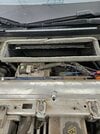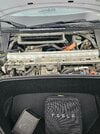Hi, Posted about this over last few years. In general, what I can't figure out is why Tesla can not modify the firmware to force drying of the filters after parking. Same issue on our 2018 Model 3 and now our 2021 Model S Refresh. In 2018, they promised a programming change to force the damper open, run for a few minutes, then switch to battery uses. I have never had this problem with any other car/AC system. Even if the priority is to protect the battery (primary purpose of the AC system) it would seem not too difficult. I have tried unsuccessfully to not pay for the Cabin Filter/Labor, not because of the $48 cost, but to force the issue to the top of the Warranty Cost exceptions report on someones desk at HQ. This would then possibly, force a review of the options in the software. I know many of us enjoy working on our cars, ICE and now EV, but this issue is random and annoying in some pretty expensive cars. Thoughts and feedback welcome.




